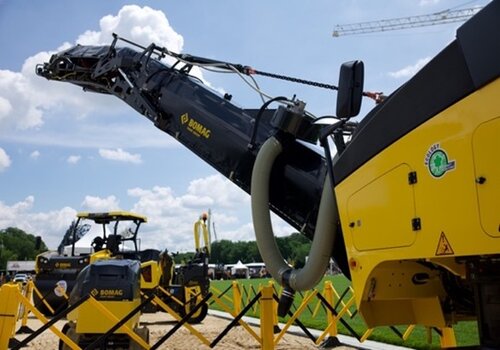If you are in a mental health crisis, call or text 988 to speak to a crisis counselor now. You can also text HOME to 741741 to reach the Crisis Text Line and speak to a live, trained crisis counselor. Learn more about the Suicide & Crisis Lifeline 988.
Mental health and physical health are intertwined, and this is an important case in the construction and mining industry. Anyone who has suffered a physical injury (so, most of us) can tell you that there’s a huge emotional and mental effect when we physically do not feel well. The same is true if you flip those around – our physical health is affected by mental health conditions.
What happens when you take a job that is physically and mentally demanding like construction work? The industry has stepped up its safety game. We have jobsite safety huddles, we have requirements for PPE and other safety gear, but it’s only in recent years that mental health has become part of the safety conversation.
It’s certainly needed. Despite construction being so physically demanding, suicide is the No. 1 killer of construction industry workers. Substance use disorder is next on that list. Despite being classified as “mental illness,” these conditions and others are physical.
The high rates of substance use disorder and overdose in industries like construction and mining are not an indictment of the workers who take these jobs. Rather, this is an urgent call to identify workplace factors that may contribute to these devastating outcomes and how those may be modified to prevent illness, injury and death and promote employee health and well-being.
Carol Nixon, PhD
Research Health Scientist, NIOSH Spokane Mining Research Division
SUBSTANCE USE DISORDER
Substance use disorder in construction is a serious threat and it’s one of the mental health conditions that has direct physical effects at every stage of the illness. It can start with a physical injury.
“Manual labor increases risk of work-related injuries and strain; and pain is the most common reason for receiving an opioid prescription,” says Carol Nixon, PhD, research health scientist, NIOSH Spokane Mining Research Division. “Opioids are extremely addictive. It can take just five days to become addicted.”
It’s important to note that there is a nuanced approach to the difference between substance use disorder and dependence. Dependence is physical in that the body now depends on a specific dose to work and prevent withdrawal symptoms (like pain, nausea and vomiting to severe reactions like seizures). In substance use disorder, the drug in question targets the brain’s “reward center,” so people with this condition could lose the ability to prioritize their safety and wellness over continued drug use, leading it to be considered a mental health condition.
Not every person who becomes dependent on a drug has a substance use disorder. An example of this would be medications like anti-depressants. Suddenly discontinuing these medications can cause withdrawal symptoms, but there isn’t necessarily a desire to continue that specific drug because the brain’s reward center isn’t activated.
People can experience dependence and substance use disorder at the same time – combining the physical illness with mental illness. What’s worse is that people in mining and construction trades are prescribed opioids more often than other industries.
“The high rates of substance use disorder and overdose in industries like construction and mining are not an indictment of the workers who take these jobs,” Nixon says. “Rather, this is an urgent call to identify workplace factors that may contribute to these devastating outcomes and how those may be modified to prevent illness, injury and death and promote employee health and well-being.”
STRESS AT WORK
“Workplace stress is an extremely important issue in almost all workplaces. It’s one of the most common concerns we hear about from employers,” says L. Casey Chosewood, M.D., director, NIOSH Office of Total Worker Health. “And today, it’s even more critical that we change this misconception that this discussion doesn’t belong in the workplace because mental health challenges and the opioid overdose and suicide epidemics are devastating many in our workforce. Some occupations and industries, like construction and mining, are especially hard hit.”
Stress in construction comes from all around and the COVID-19 pandemic added an extra level of uncertainty, the effects of which still linger today. A few reasons for stress in the industry are:
- The industry is in a state of constant change as technology and techniques improve.
- Construction includes hazardous activities, like road work, demolition, electrical hazards, exposure to extreme weather conditions, chemical handling and a lot more.
- Measuring productivity is a crucial part of each project and with high productivity requirements comes high stress to get a job done on time and on budget.
“Mental health conditions are a leading cause of disability and are costly for many employers. And underlying mental health concerns or diagnoses impact productivity day in/out and can often slow the return to work after workers face other injury and illness, whether work related or not,” Chosewood says. “The quality of the job and the demands of the work are critical to consider here, not just personal risk factors. We know that fast-paced work, high job demands, job insecurity and low wages in many work settings may increase risks for poor mental health outcomes.”
According to the American Psychological Association, stress is a normal reaction to pressure we experience every day – but it also causes “mind-body changes.” So, stress directly affects mental and physical health.
HOW WORK CAN HELP
“The public generally thinks about harmful substance use as an individual, lifestyle choice,” Nixon says. “Yet this view overlooks how conditions of work contribute downstream to workers’ harmful substance use and substance use disorders.”
The first step to helping others is checking your own stigma first. The stigma comes from not understanding what other people are experiencing and that leads to us developing incorrect ideas about a person’s willpower, their abilities and more.
We have to get comfortable talking about uncomfortable topics. We have to be open for people to feel comfortable speaking up when they are struggling. This is a good place for people in leadership roles to step up to change company policy and attitudes.
“Employers and managers should increase their comfort around these issues and be ready to help. Many already have skills to help mitigate or address other challenges workers face,” Chosewood says. “And this should be no different, but additional skills around empathy, increased awareness, lessening stigma and providing supportive environments, ‘soft management’ and better people skills can all contribute to a better workplace for all workers, especially those with mental health concerns.”
While we still use language to separate physical health from mental health, it’s incredibly clear that mental health is physical. Why not treat it as such?
“The good news is that workplace prevention and health promotion can be very effective,” Nixon says. “For example, employer injury prevention programs that redesign work, address early soreness and provide non-opioid pain management options reduce workers’ exposure to opioids.”
Content Notes: The CONEXPO-CON/AGG 365 newsletter will feature content about mental health over the course of the next few months. While these topics can be challenging, we want to remind you about one underlying feature: hope.
We will tackle topics related to suicide, PTSD and other mental health conditions that are prevalent in the construction industry. There are resources to help – whether you need help yourself or want to help a friend. Where there is help, there is hope.
One way to attack the mental health stigma is by telling your story. Please contact us if you would like to share your journey with fellow CONEXPO-CON/AGG 365 readers.
Another way to help is to share this story on your social media or with someone who may benefit from hearing about mental wellness in the construction industry.
Photo credit: ANDREYPOPOV/BIGSTOCKPHOTO.COM












